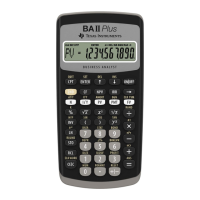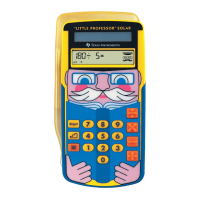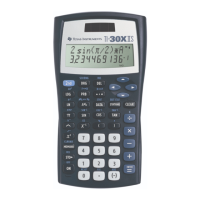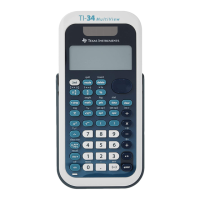Appendix B: Technical Reference 932
Accuracy Information
To maximize accuracy, the TI-89 Titanium / Voyage™ 200 carries more digits internally
than it displays.
Computational Accuracy
Floating-point (decimal) values in memory are stored using up to 14 digits with a 3-digit
exponent.
•For
min and max Window variables (xmin, xmax, ymin, ymax, etc.), you can store
values using up to 12 digits. Other Window variables use 14 digits.
• When a floating-point value is displayed, the displayed value is rounded as specified
by the applicable mode settings (Display Digits, Exponential Format, etc.), with a
maximum of 12 digits and a 3-digit exponent.
• RegEQ displays up to 14-digit coefficients.
Integer values in memory are stored using up to 614 digits.
Graphing Accuracy
The Window variable xmin is the center of the leftmost pixel used, and xmax is the
center of the rightmost pixel used.
@x is the distance between the centers of two
horizontally adjacent pixels.
•
@x is calculated as (xmax N xmin) / (# of x pixels N1).
• If
@x is entered from the Home screen or a program, xmax is calculated as xmin +
@x ù(# of x pixels N 1).
Note: For a table that lists the number of pixels in a full screen or split screen, refer to
“Setting and Exiting the Split Screen Mode” in Split Screens.
The Window variable ymin is the center of the bottom pixel used, and ymax is the center
of the top pixel used.
@y is the distance between the centers of two vertically adjacent
pixels.
•
@y is calculated as (ymax N ymin) / (# of y pixels N 1).
• If
@y is entered from the Home screen or a program, ymax is calculated as ymin +
@y ù (# of y pixels N 1).
Cursor coordinates are displayed as eight characters (which may include a negative
sign, decimal point, and exponent). The coordinate values (xc, yc, zc, etc.) are updated
with a maximum of 12-digit accuracy.
System Variables and Reserved Names
This section lists the names of system variables and reserved function names that are
used by the TI-89 Titanium / Voyage™ 200. Only those system variables and reserved
function names that are identified by an asterisk (*) can be deleted by using DelVar var
on the entry line.
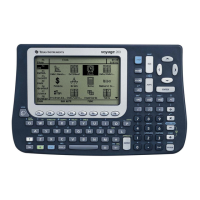
